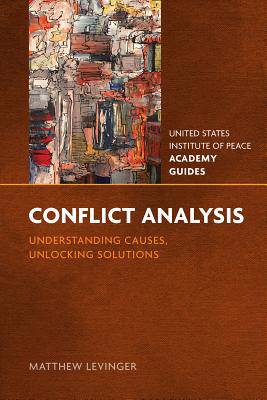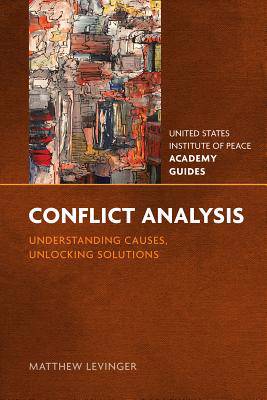
- Afhalen na 1 uur in een winkel met voorraad
- Gratis thuislevering in België vanaf € 30
- Ruim aanbod met 7 miljoen producten
- Afhalen na 1 uur in een winkel met voorraad
- Gratis thuislevering in België vanaf € 30
- Ruim aanbod met 7 miljoen producten
Zoeken
Omschrijving
The change in the patterns and nature of deadly conflicts since the end of the Cold War has spurred many organizations in and outside governments to develop robust strategies to anticipate, prevent, and respond to these conflicts. Conflict analysis is the criticalfirst step toward meeting these objectives."Conflict Analysis: Understanding Causes, Unlocking Solutions" is a guide for practitioners seeking to prevent deadly conflict or mitigate political instability. Governments, nongovernmental organizations, and businesses operating in conflict zones will find this volume to be a practical, accessible reference for understanding and communicating persuasively about threats of organized violence. This handbook integrates theory and practice and emphasizes the importance of analyzing the causes of peace as well as the causes of conflict. It stresses that conflict analysis is a social as well as an intellectual process, helping practitioners translate analysis into effective action. To illustrate key points, Levinger draws on both historical and contemporary cases, including the Cuban missile crisis, the Israeli-Palestinian conflict, the Yugoslav wars of secession, the Rwandan genocide, the 9/11 attacks, and the Iraq and Afghanistan wars. Part I examines contemporary global conflict trends, perspectives on the causes of conflict and peace, and quantitative models for early warning and risk assessment. Part II provides practitioners with a menu of analytical tools for systematically assessing causes and potential trajectories of deadly conflicts. Part III focuses on the role of conflict analysis in decision making and program implementation, including the social dimensions of conflict analysis.The analytical tools in this volume illuminate emerging trends in complex, volatile, and ambiguous environments and will enable practitioners to anticipate and respond with greater agility to threats and opportunities.
Specificaties
Betrokkenen
- Auteur(s):
- Uitgeverij:
Inhoud
- Aantal bladzijden:
- 265
- Taal:
- Engels
- Reeks:
Eigenschappen
- Productcode (EAN):
- 9781601271433
- Verschijningsdatum:
- 1/06/2013
- Uitvoering:
- Paperback
- Formaat:
- Trade paperback (VS)
- Afmetingen:
- 152 mm x 226 mm
- Gewicht:
- 453 g

Alleen bij Standaard Boekhandel
+ 76 punten op je klantenkaart van Standaard Boekhandel
Beoordelingen
We publiceren alleen reviews die voldoen aan de voorwaarden voor reviews. Bekijk onze voorwaarden voor reviews.











